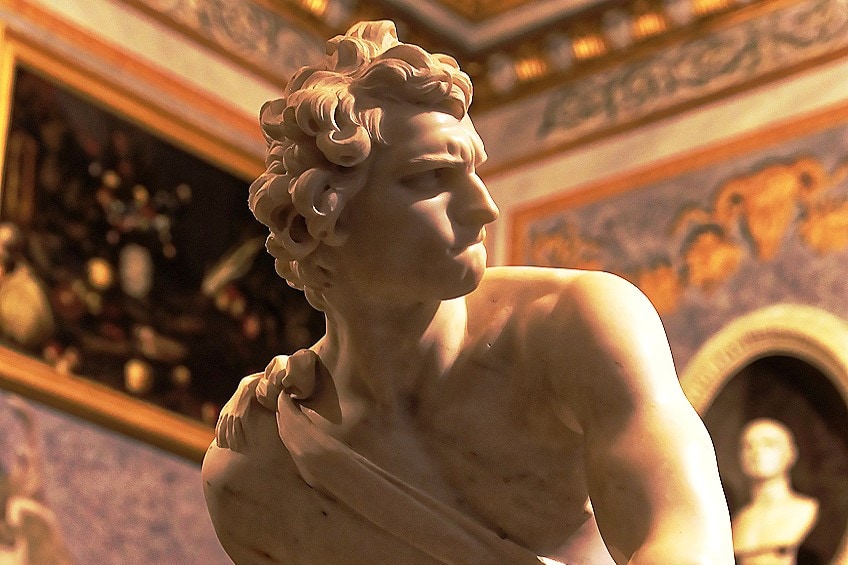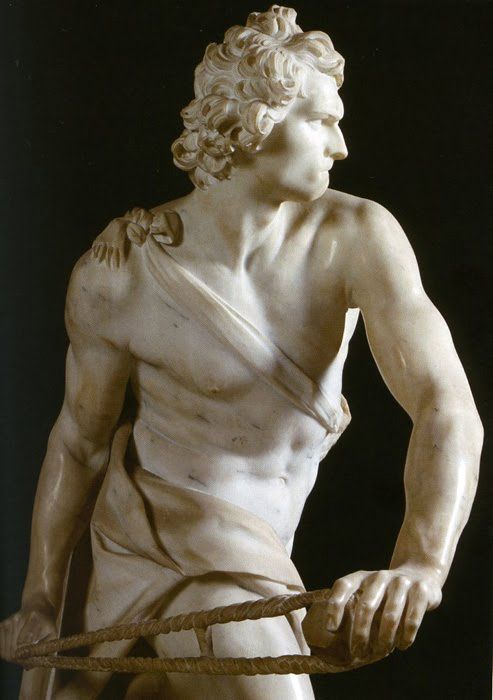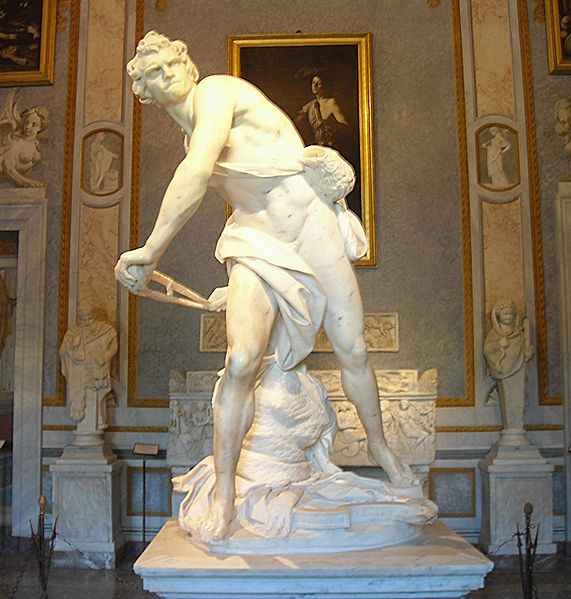The marble David by Gian Lorenzo Bernini stands as a quintessential example of Baroque sculpture, celebrated for its lifelike dynamism and emotional depth. Created over the course of eight months from 1623 to 1624, the statue was commissioned by Cardinal Scipione Borghese to enhance the grandeur of his Roman villa. Today, this masterpiece remains a highlight of the Galleria Borghese, drawing admirers from around the globe.

A Bold Departure in Depicting David
Bernini’s depiction of David revolutionized how the biblical hero was portrayed in art. Unlike Michelangelo’s poised and contemplative David or Donatello’s youthful and triumphant interpretation, Bernini’s David captures the exact moment of action: the young shepherd preparing to release his sling. The figure is alive with tension, his muscles straining, his body twisting, and his expression resolute with determination. This choice to focus on the climactic moment of the narrative is emblematic of the Baroque emphasis on movement, drama, and emotional engagement.

Technical Brilliance
Bernini’s technical mastery shines in every detail of the sculpture. The veins visible in David’s hands, the taut sling poised for release, and the intricate anatomy of his physique demonstrate the artist’s deep understanding of human anatomy and his ability to infuse marble with life. The positioning of David’s body creates a spiraling motion that invites viewers to walk around the statue, experiencing its story from multiple perspectives. This dynamic approach showcases Bernini’s innovative skill in breaking away from static representations, making the sculpture come alive from every angle.
Theatrical Influence
As both a sculptor and a playwright, Bernini infused his works with theatricality, and David is no exception. The sculpture engages the viewer directly—David’s intense gaze almost breaks the fourth wall, making onlookers feel as though they are part of the confrontation with Goliath. This interactive quality underscores the Baroque goal of creating an immersive and emotional experience, drawing viewers into the dramatic tension of the moment.

Legacy and Symbolism
Beyond its technical and aesthetic achievements, Bernini’s David serves as a symbol of resilience and divine favor, reflecting the Counter-Reformation ethos of the Catholic Church. It also underscores Bernini’s ability to humanize divine narratives, portraying David not just as a biblical hero but as a relatable figure of courage and determination. The sculpture’s narrative intensity and intricate detail convey a profound sense of the divine working through human action, a theme central to Baroque art and spirituality.

A Timeless Masterpiece
Bernini’s David transcends its era, embodying the spirit of the Baroque with its powerful motion, narrative energy, and emotional resonance. It remains a timeless work, revered not only as a testament to Bernini’s genius but also as a celebration of the human spirit’s capacity for bravery and action. Today, it continues to inspire awe as one of the crowning achievements of Western art, standing as a bridge between divine storytelling and the visceral realities of human emotion.

